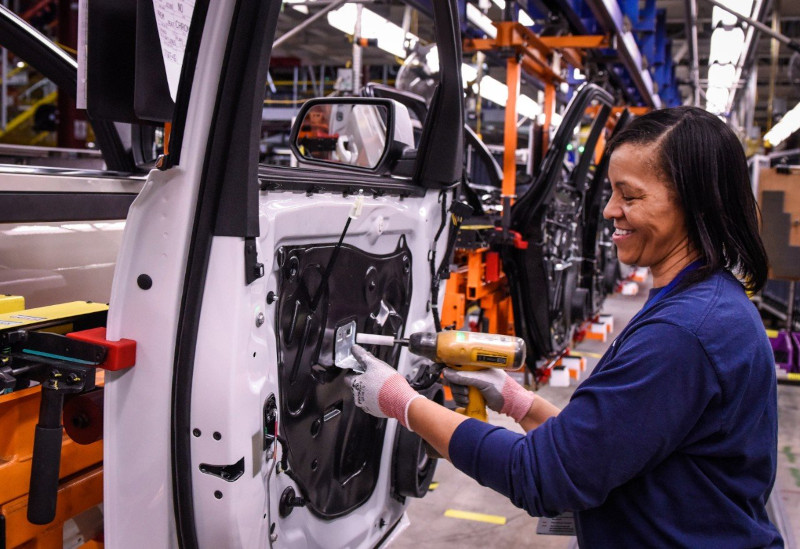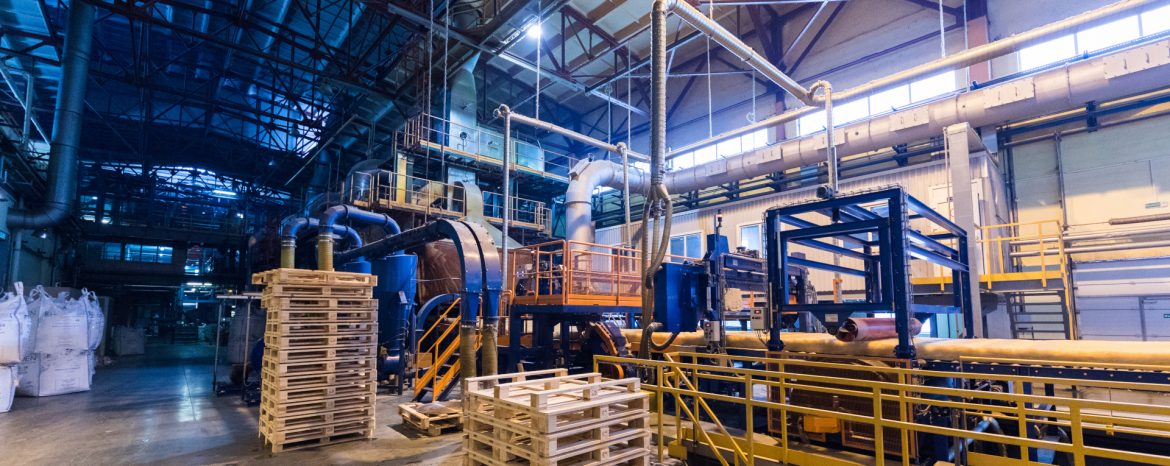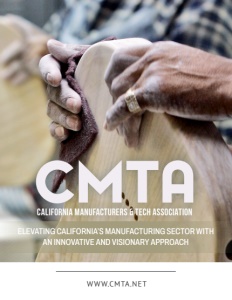California Manufacturers and Technology Association
Elevating California’s Manufacturing Sector with an Innovative and Visionary Approach
The voice for the industry, the California Manufacturing and Technology Association sets the education and legislative course
For 105 years the California Manufacturers & Technology Association (CMTA) has been dedicated to fostering a favorable business environment for California’s vast manufacturing, processing, and technology-based enterprises.
Based in Sacramento, the organization represents a network of 400 companies within the manufacturing realm, playing a pivotal role in a sector that annually contributes over $300 billion to the economy and provides employment to over 1.3 million Californians. In collaboration with the Government of California, the organization works to ensure fairness in laws and regulations, while encouraging economic expansion and sustainable environmental preservation.

Lance Hastings, CEO and President
President and CEO Lance Hastings says, “Among the business community, CMTA is the only trade association that’s focused solely on manufacturing, and we are recognized as a leader in that space. Manufacturing is such an important part of the California economy, that it’s important that the sector is represented well. We work on behalf of our members, who range from small, medium, and large manufacturers, trying to create the environment for them to do business in California.”
Reshaping the Narrative
Since 1918 CMTA has made advocacy a priority, both in the legislative environment, but also with the governor and the regulatory body. Today the organization is working to broaden its reach, working on workforce development initiatives, and expanding communication with members.
“What I’ve been trying to do in the last four years is to really broaden our reach, working more closely with our local manufacturing organizations, workforce development, to make sure that our members have employees well into the future that are trained and ready and able to come into the sector, and really offer much more to our members than just the advocacy,” Hastings explains.
The addition of Ananda Rochita, as Vice President of Communications, has played a pivotal role in the evolution and amplification of CTMA’s communication strategies.
“Social media has been a great avenue for us, because not only have we been able to reach out to manufacturers directly, but also some of those younger generations, as well as some of our legislators who follow us on various different mediums from YouTube shorts, Instagram, Facebook, Twitter, LinkedIn, we’re pretty much on all different platforms,” Rochita reports. The organization has also put an emphasis on in-person events, providing opportunities for face-to-face interactions, which is something members missed during the pandemic.
A Women Making California event was held on International Women’s Day in March of 2023.
“We brought together our different members, and Blue Diamond, Northrop Grumman, Lockheed, and Boeing were all there to interact with some of the younger generations that were interested in manufacturing.”
Rochita relays that CMTA is also working to address the inevitable ‘silver tsunami’ that will see gaps in the workforce due to the large number of people retiring over the next few years. “We are trying to figure out who will be our next welders, who will be our next manufacturing leaders,” she acknowledges.
“Manufacturing is an opportunity. Some of these businesses are actually paying for education too. So, we’re educating parents and students that you don’t have to go through that four-year traditional degree, that there are other options out there.”
Coming out of the challenges posed by COVID, CMTA is seizing the opportunity to reshape the narrative around manufacturing, highlighting the potential for quality employment and opportunities.
“With that narrative comes the realities of inflation, and interest rates that make capital much more expensive, which is why we’re promoting for the second year in a row legislation that would provide an investment credit to manufacturers, for making an investment here in California,” says Hastings, suggesting that support from the state in the form of an incentive would encourage a reinvestment renaissance.
“That will really go a long way to reducing the cost of capital and allowing manufacturers to double down on California as a state to do business,” he asserts.
Addressing Workforce Challenges
California remains at the top of the list as the largest manufacturing state in terms of number of facilities and employees. However, Hastings points out that the state also faces unique challenges, including higher costs, and a higher regulatory burden.
Despite these obstacles he says, “We do have 40 million people, of which we need to make sure that there’s at least 1.3 to 2 million trained and ready to work in our sector. That’s one of the commitments we’re making outside the legislative environment. Workforce development for us is really the issue that keeps everyone up at night.”
The Employment Training Panel, a state-funded agency within the Labor and Workforce Development Agency allocates funding for on-the-job training, which serves as one source of support to tackle workforce challenges in the industry. Another strategy involves educating individuals about alternative options beyond traditional four-year degree programs.
“The community colleges are well positioned to help those who may not have a complete career path identified, to develop some skills and training through credentials or certificates, that really get them into a good paying situation,” conveys Hastings.
“That could be welding, it could be introductory electronics, it could be process management, and those kinds of things. If you started in the manufacturing sector upon graduating high school, for four years, you’re earning money, while your counterparts who did go to the university aren’t, and you can be ahead of the game, probably between a quarter of a million dollars just by working for those four years.”
Information Sharing
Recognizing that CMTA operates within an ecosystem of collaborative knowledge exchange, Hastings imparts that advanced manufacturing is undeniably the next wave. “That is manufacturing, essentially on steroids,” he portrays. “That combination of information, processes, and technology will make manufacturing the most efficient it’s ever been in the history of humankind. That includes water stewardship, concern for the environment, efficient output, and, of course, how we treat our employees.”
To keep members informed of innovation and news in the industry, CMTA launched ‘Friday Five’ a weekly shout-out with the top five things to be aware of from the week. Video recaps are another source of information, shared via social media.
“It’s not necessarily a member benefit, but it is just going out to the masses because the video is really important as we’re trying to change the manufacturing industry and the perception of manufacturing,” Rochita describes.

Representing the Industry and Staying Aware of Compliance Requirements
A significant portion of CMTA’s efforts is directed towards interacting with regulatory bodies such as the California Air Resources Board (CARB) and the State Water Resources Control Board, agencies that Hastings says have a direct impact on individual manufacturing facilities.
“Our team spends much of their time engaging with the regulators, and the leadership in these agencies to express the concerns of manufacturing so that we can make sure we’re in compliance,” he recounts.
“Really, one’s reputation is tied up in compliance. If that ever goes south, you obviously lose your reputation, and you could get in some financial trouble. So, we do a really good job of working, through our members, with the regulatory agencies.”
To keep up to date in the ever-evolving landscape of regulations and industry dynamics, CMTA co-chairs a meeting known as Thursday Group. “That is businesses and other stakeholders that sit around once a month, surprisingly, on a Thursday, and they talk about the issues of the day so that we’re all aware of what’s going on. We’re always trying to stay ahead of that curve,” Hastings stresses.
Future Focus
As for what is on the horizon, Hastings says CMTA will prioritize legislative effort AB number 52, the manufacturers’ investment credit legislation sponsored by Assembly Member Tim Grayson from Concord. This bill aims to secure the Governor’s approval after a previous year’s veto. Another major priority is the “Made in California” campaign.
Hastings depicts, “If we are able to make it here, that means that folks in Nevada and Oregon and Arizona aren’t making it. So, we’re making a big push with the Governor’s Office of Business and Economic Development to advance that legislation.” While working towards these goals, \there is also a need for defensive actions.
He recounts, “Most notably, there’s legislation that would expand the reporting requirements on environmental impacts of companies by mandate rather than letting manufacturers use that in their annual statements. In a competitive environment, they’re wanting to add a great deal of costs. So, we oppose that bill.”
He shares that the longer-range goal is to continue to build CMTA’s reputation as an authentic, focused, and constructive stakeholder in the California manufacturing community.
On a more personal note, Hastings shares, “I’m motivated every day to get up in the morning and make the atmosphere better for manufacturers than it was the day before. I think I’ve brought a new sense of energy and urgency to CMTA.”
“Notwithstanding a two-year interruption with COVID, we’ve been able to grow the association every single year that I’ve been here, and I look forward to doing that well into the future,” he concludes.
AT A GLANCE
California Manufacturers and Technology Association
What: An organization representing the interests of the manufacturing industry for more than a century
Where: Sacramento, California
Website: www.cmta.net


